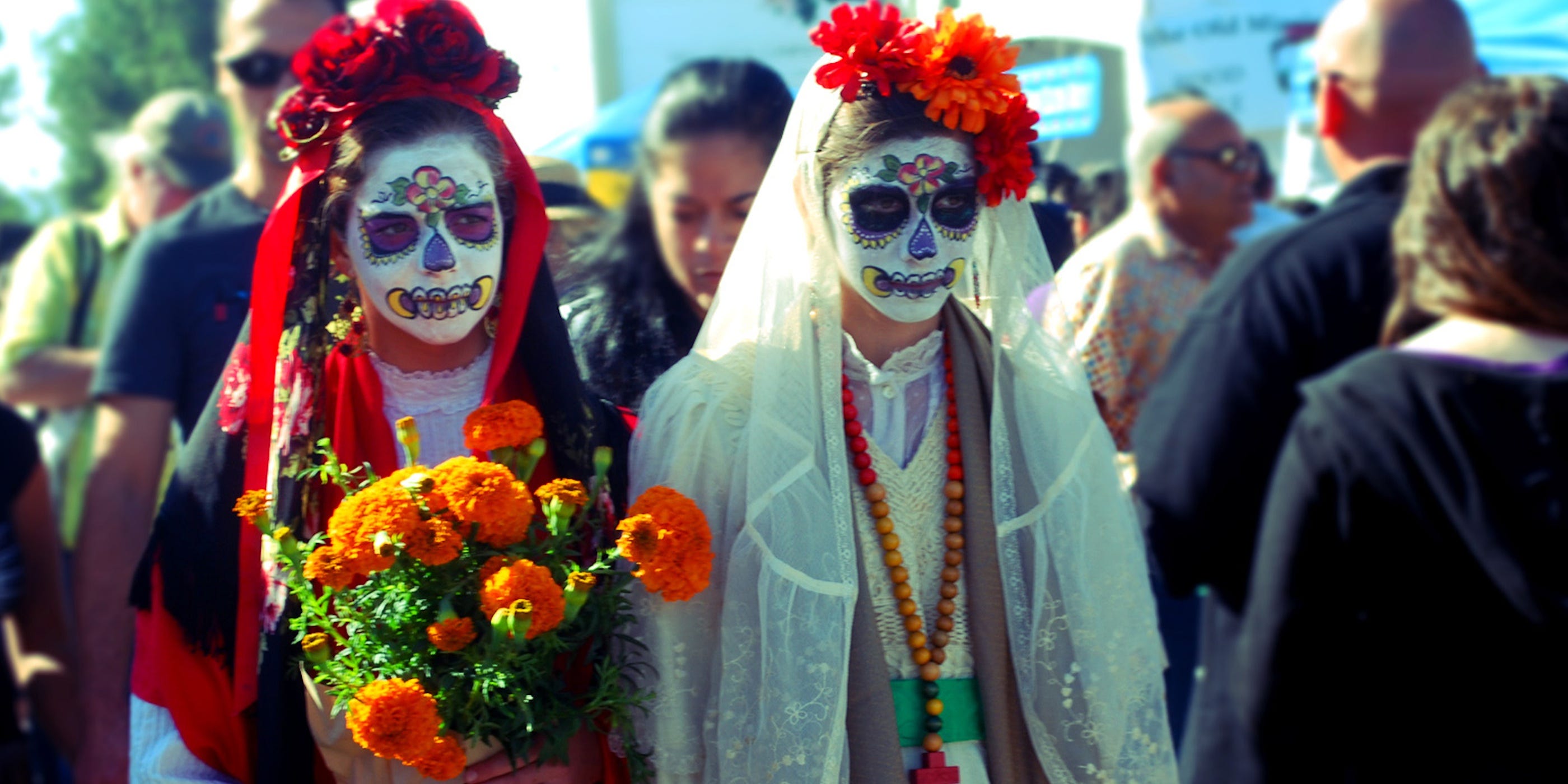
By Molly Sanchez
I noticed this post on my Facebook news feed this weekend: “Am I the only person who feels uncomfortable with people sexualizing sacred parts of religion and cultural tradition?! Seeing a lot of sexualized Dia de los Muertos themes … this season.”
The thread that followed had over 50 comments and the issue proved to be contentious and divisive.
“There’s nothing sexy, or remotely okay with people of other ethnicities throwing on bone outfits and claiming to be an entire religious event for Halloween,” one commenter wrote, while another added, “I have nothing against people wearing clothes from other cultures, but for fuck’s sake, at least wear it correctly.”
The debate goes, as most things do, farther than my Facebook page. And although cultural appropriation isn’t a new issue, it’s been back in the news this year — especially around the (deserved) backlash against wearing headdresses at music festivals. In recent years the “We’re a Culture Not a Costume” campaign fought back against dressing in offensive cultural archetypes like a bandito or a geisha.
The social media world is decidedly split on the issue of Dia de los Muertos themed Halloween costumes, though, which range from sultry to simple face paint and make up. Most of these outfits are meant to look like the classic image of the sugar skull or La Calavera Catrina, an illustration by Jose Guadalupe Posada. These are cultural if not wholly religious elements of the celebration of Day of the Dead.
Some call it cultural appropriation and find it appalling that non-Latinos would use a sacred holiday as an excuse to dress up. Others find the costume theme benign and fun. I tend to fall mostly into the latter camp. Although I am of Mexican descent, celebrating Dia de los Muertos has never been important to my family. But I understand that it’s a holiday that celebrates life by celebrating the inevitability of death. I find comfort in that concept of treating death not as a thing to be feared but as an essential part of life. I especially like the idea of making ofrendas to your dead loved ones by sharing their favorite food or drink because it’s a way to celebrate them long after they’re gone.
I asked some local pillars of the San Francisco Mexican community to weigh in about the blurring line between appreciation and appropriation with Dia de los Muertos.
Professor Teresa Carillo, who teaches ethnic and Latino studies at San Francisco State, says that the discussion of Latino customs becoming popularized to broader audiences is especially relevant given the current gentrification of The Mission. “To have that appropriation on an economic level be the backdrop of this holiday really accentuates the damage,” she says. She adds that the cancellation of large scale Halloween parties in The Castro lead more people to co-opt Dia de los Muertos as another reason to party.
Professor Tomas Almaguer is the author of several books and articles on Chicano culture. He says he doesn’t commemorate Dia de los Muertos “any more than I do Halloween” though he sees why some who hold the holiday sacred might take issue. Still he finds other examples of appropriation, such as white people sporting dreadlocks, to be more problematic than “a bunch of young white folks dressing up and finding another excuse to have a good time.” “We have much more important things to get worked up about,” he says, “like the murder of Andy Lopez in Santa Rosa and immigrant rights issues. That’s where I think attention needs to be; not this silliness and distraction.”
The Mission’s Galería de la Raza is planning to host an all day Dia de los Muertos celebration this Sunday. The event will feature sugar skull making and a fundraiser which communications director Henry Pacheco describes as “basically a dance party.” Pacheco, though not observant of the holiday himself, says that there are ways to “participate thoughtfully” in Dia de los Muertos. He encourages people to understand the meaning behind the holiday and not use it as an excuse to “rage all weekend like some people do for Cinco de Mayo.”
Ani Rivera, the executive director of the Galería, concurs. “The issue is that it has become commercialized to some degree,” she says. “ It’s so much more than just a costume.” She’s quick to point out that she doesn’t think the holiday is “Latino only,” though. “Dia de los Muertos is a universal concept. We all have to deal with death in our own way.”
Carillo urges people to “come out and observe this holiday once first … rather than guessing how to do it.” Similarly, articles like this one encourage anyone thinking of donning cultural costumes to think critically and to educate themselves on Mexican culture before making their decisions on what to wear. “Reach out to cultural spaces and find cultural experts around you,” Rivera says, “ they can really tell you a lot.”
What do you think? Tell us in the comments.
Photo courtesy of Flickr user, Jenny Huey.







